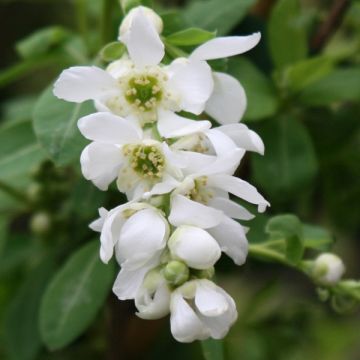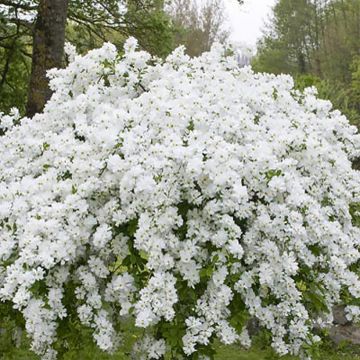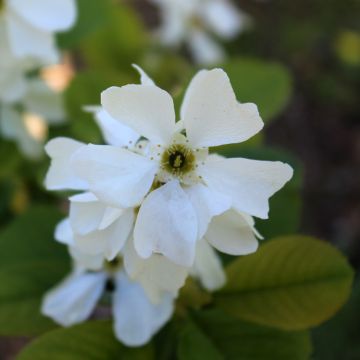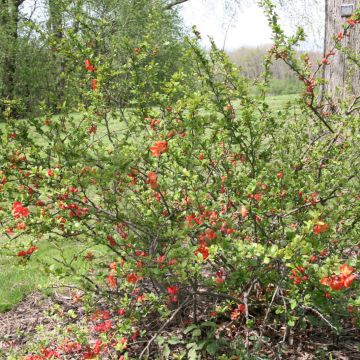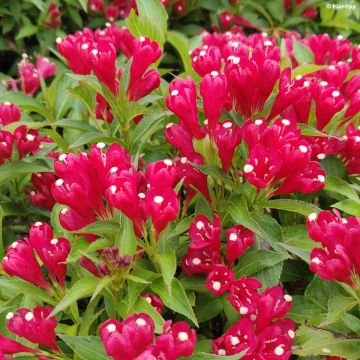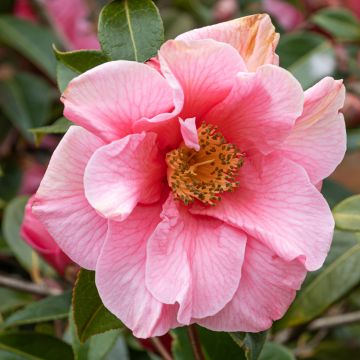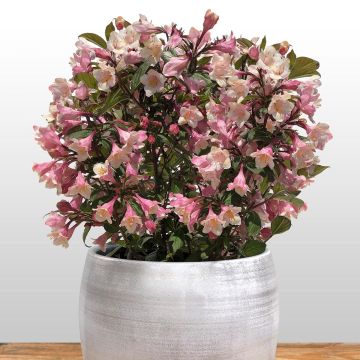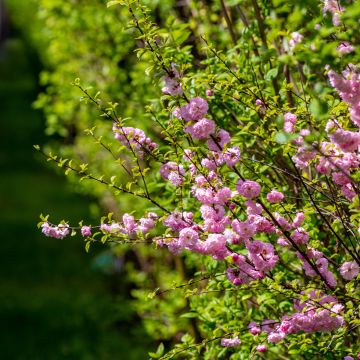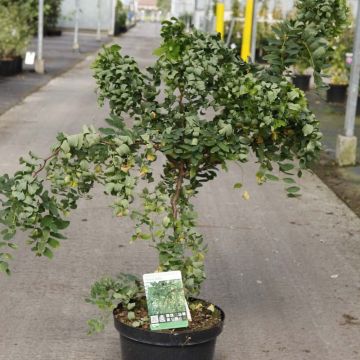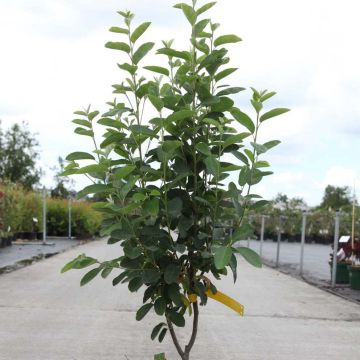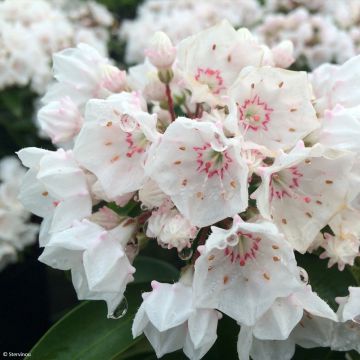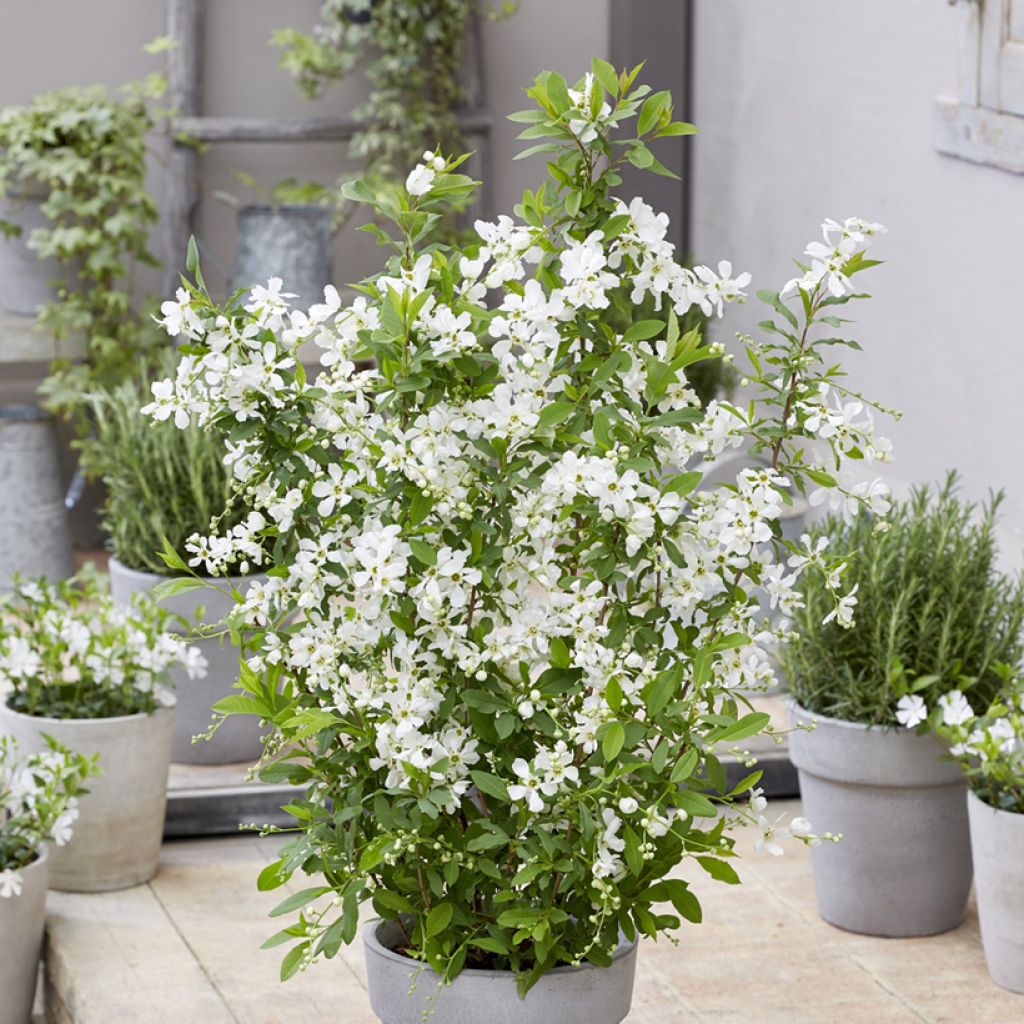

Exochorda racemosa Blushing Pearl
Exochorda racemosa Blushing Pearl
Exochorda racemosa 'Huibl' BLUSHING PEARL
This item cannot be shipped to the selected country
Delivery charge from €5.90
More information
Schedule delivery date,
and select date in basket
This plant carries a 24 months recovery warranty
More information
We guarantee the quality of our plants for a full growing cycle, and will replace at our expense any plant that fails to recover under normal climatic and planting conditions.
From €5.90 for pickup delivery and €6.90 for home delivery
Express home delivery from €8.90.
Does this plant fit my garden?
Set up your Plantfit profile →
Description
Exochorda racemosa 'Blushing Pearl' ('Huibl') is a new variety, splendid in spring. It is a large bushy shrub with an upright habit, whose branches are covered with round pearl-like, barely pink buds, which open into large pure white flowers. It requires little maintenance and is perfectly resistant to cold. Magnificent in a flowering hedge, as a standalone plant or in a large container on the terrace, its stems can also be cut and the buds will open in the house, as early as the end of winter.
Exochorda Blushing Pearl® is a deciduous shrub from the rose family, recently selected in the Netherlands. It is derived, among others, from the botanical species Exochorda racemosa, the pearl tree, native to Manchuria and Korea. Easy to grow, very hardy and unassuming, this plant will benefit from pruning after flowering to promote generous flowering the following spring. The 'Blushing Pearl' cultivar has an upright, slightly spreading habit, rather than trailing like the species. It will reach approximately 2m in height and 1m in width at around 10 years of age, sometimes a little more depending on growing conditions. This forms reddish young shoots. It bears elegant, elongated and lanceolate leaves, 4 to 6cm long and 1 to 2cm wide, a very fresh green, arranged in clusters. These deciduous leaves appear at the same time as the flowering and fall in autumn. The flowering takes place from April to May, all along the branches which are adorned with a multitude of white buds touched with a hint of pink, which open into flowers with a diameter of 3.5 to 4cm with 5 pure white petals.
Exochorda racemosa 'Blushing Pearl' is an excellent informal hedge shrub. It can also be planted as a specimen plant in a small garden or integrated into a shrub border. To decorate a large balcony or terrace, choose a container with a diameter of at least 50cm and with drainage holes at the bottom. In the garden, it can be paired with flowering currants, Japanese quinces, mock oranges, lilacs... To extend the flowering period of your hedge, also consider butterfly bushes or hibiscus. As a specimen plant, its base can be adorned with perennials and bulbs that bloom at the same time, such as ipheions or chionodoxas.
Report an error about the product description
Plant habit
Flowering
Foliage
Botanical data
Exochorda
racemosa
'Huibl' BLUSHING PEARL
Rosaceae
Cultivar or hybrid
Other Exochorda
Planting and care
Plant Exochorda racemosa 'Blushing Pearl' in full sun or partial shade, in a fairly fertile, moist, loose, and well-drained soil. Any good, well-worked garden soil, not too chalky or too dry, is suitable. It can be planted in autumn or early spring. Light pruning after flowering is recommended to remove faded branches and to even out the growth.
You can cut back the oldest branches (over 3 years old) by one-third, every two to three years, after flowering, ensuring good air circulation in the centre of the bush. This will encourage the formation of young shoots and prevent the bush from becoming bare at the base.
Planting period
Intended location
Care
This item has not been reviewed yet - be the first to leave a review about it.
Spring-flowering shrubs
Haven't found what you were looking for?
Hardiness is the lowest winter temperature a plant can endure without suffering serious damage or even dying. However, hardiness is affected by location (a sheltered area, such as a patio), protection (winter cover) and soil type (hardiness is improved by well-drained soil).

Photo Sharing Terms & Conditions
In order to encourage gardeners to interact and share their experiences, Promesse de fleurs offers various media enabling content to be uploaded onto its Site - in particular via the ‘Photo sharing’ module.
The User agrees to refrain from:
- Posting any content that is illegal, prejudicial, insulting, racist, inciteful to hatred, revisionist, contrary to public decency, that infringes on privacy or on the privacy rights of third parties, in particular the publicity rights of persons and goods, intellectual property rights, or the right to privacy.
- Submitting content on behalf of a third party;
- Impersonate the identity of a third party and/or publish any personal information about a third party;
In general, the User undertakes to refrain from any unethical behaviour.
All Content (in particular text, comments, files, images, photos, videos, creative works, etc.), which may be subject to property or intellectual property rights, image or other private rights, shall remain the property of the User, subject to the limited rights granted by the terms of the licence granted by Promesse de fleurs as stated below. Users are at liberty to publish or not to publish such Content on the Site, notably via the ‘Photo Sharing’ facility, and accept that this Content shall be made public and freely accessible, notably on the Internet.
Users further acknowledge, undertake to have ,and guarantee that they hold all necessary rights and permissions to publish such material on the Site, in particular with regard to the legislation in force pertaining to any privacy, property, intellectual property, image, or contractual rights, or rights of any other nature. By publishing such Content on the Site, Users acknowledge accepting full liability as publishers of the Content within the meaning of the law, and grant Promesse de fleurs, free of charge, an inclusive, worldwide licence for the said Content for the entire duration of its publication, including all reproduction, representation, up/downloading, displaying, performing, transmission, and storage rights.
Users also grant permission for their name to be linked to the Content and accept that this link may not always be made available.
By engaging in posting material, Users consent to their Content becoming automatically accessible on the Internet, in particular on other sites and/or blogs and/or web pages of the Promesse de fleurs site, including in particular social pages and the Promesse de fleurs catalogue.
Users may secure the removal of entrusted content free of charge by issuing a simple request via our contact form.
The flowering period indicated on our website applies to countries and regions located in USDA zone 8 (France, the United Kingdom, Ireland, the Netherlands, etc.)
It will vary according to where you live:
- In zones 9 to 10 (Italy, Spain, Greece, etc.), flowering will occur about 2 to 4 weeks earlier.
- In zones 6 to 7 (Germany, Poland, Slovenia, and lower mountainous regions), flowering will be delayed by 2 to 3 weeks.
- In zone 5 (Central Europe, Scandinavia), blooming will be delayed by 3 to 5 weeks.
In temperate climates, pruning of spring-flowering shrubs (forsythia, spireas, etc.) should be done just after flowering.
Pruning of summer-flowering shrubs (Indian Lilac, Perovskia, etc.) can be done in winter or spring.
In cold regions as well as with frost-sensitive plants, avoid pruning too early when severe frosts may still occur.
The planting period indicated on our website applies to countries and regions located in USDA zone 8 (France, United Kingdom, Ireland, Netherlands).
It will vary according to where you live:
- In Mediterranean zones (Marseille, Madrid, Milan, etc.), autumn and winter are the best planting periods.
- In continental zones (Strasbourg, Munich, Vienna, etc.), delay planting by 2 to 3 weeks in spring and bring it forward by 2 to 4 weeks in autumn.
- In mountainous regions (the Alps, Pyrenees, Carpathians, etc.), it is best to plant in late spring (May-June) or late summer (August-September).
The harvesting period indicated on our website applies to countries and regions in USDA zone 8 (France, England, Ireland, the Netherlands).
In colder areas (Scandinavia, Poland, Austria...) fruit and vegetable harvests are likely to be delayed by 3-4 weeks.
In warmer areas (Italy, Spain, Greece, etc.), harvesting will probably take place earlier, depending on weather conditions.
The sowing periods indicated on our website apply to countries and regions within USDA Zone 8 (France, UK, Ireland, Netherlands).
In colder areas (Scandinavia, Poland, Austria...), delay any outdoor sowing by 3-4 weeks, or sow under glass.
In warmer climes (Italy, Spain, Greece, etc.), bring outdoor sowing forward by a few weeks.

































